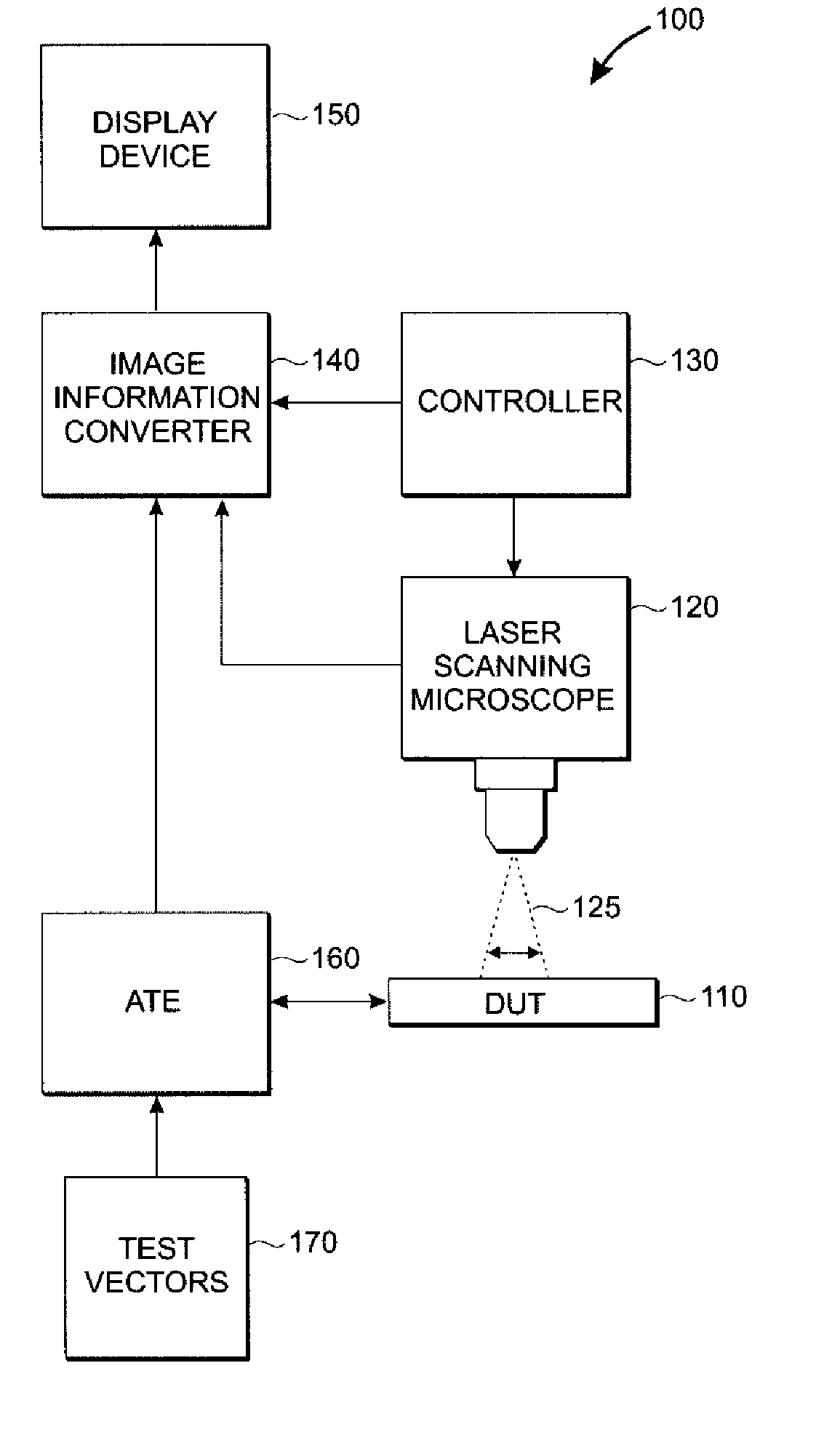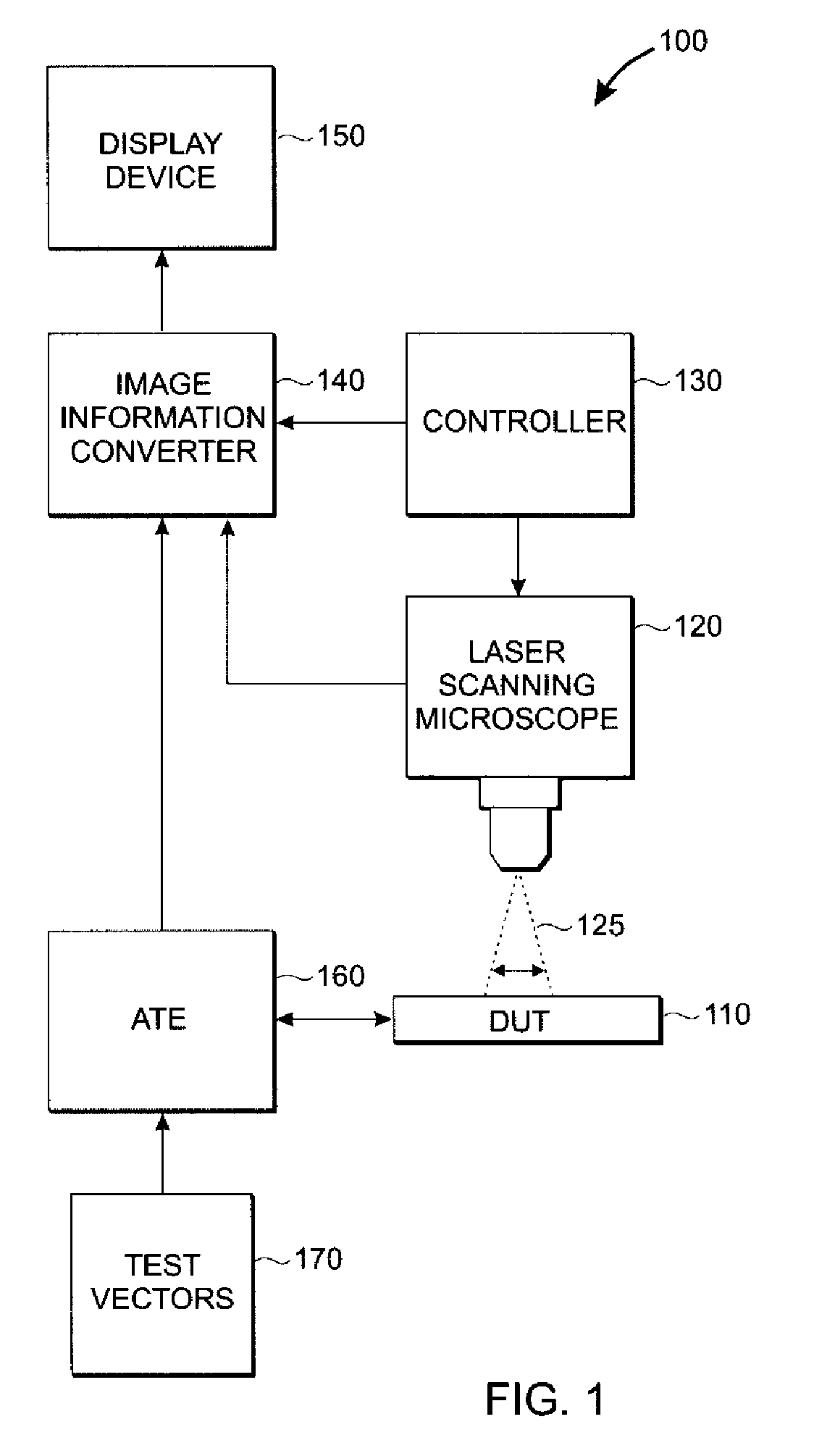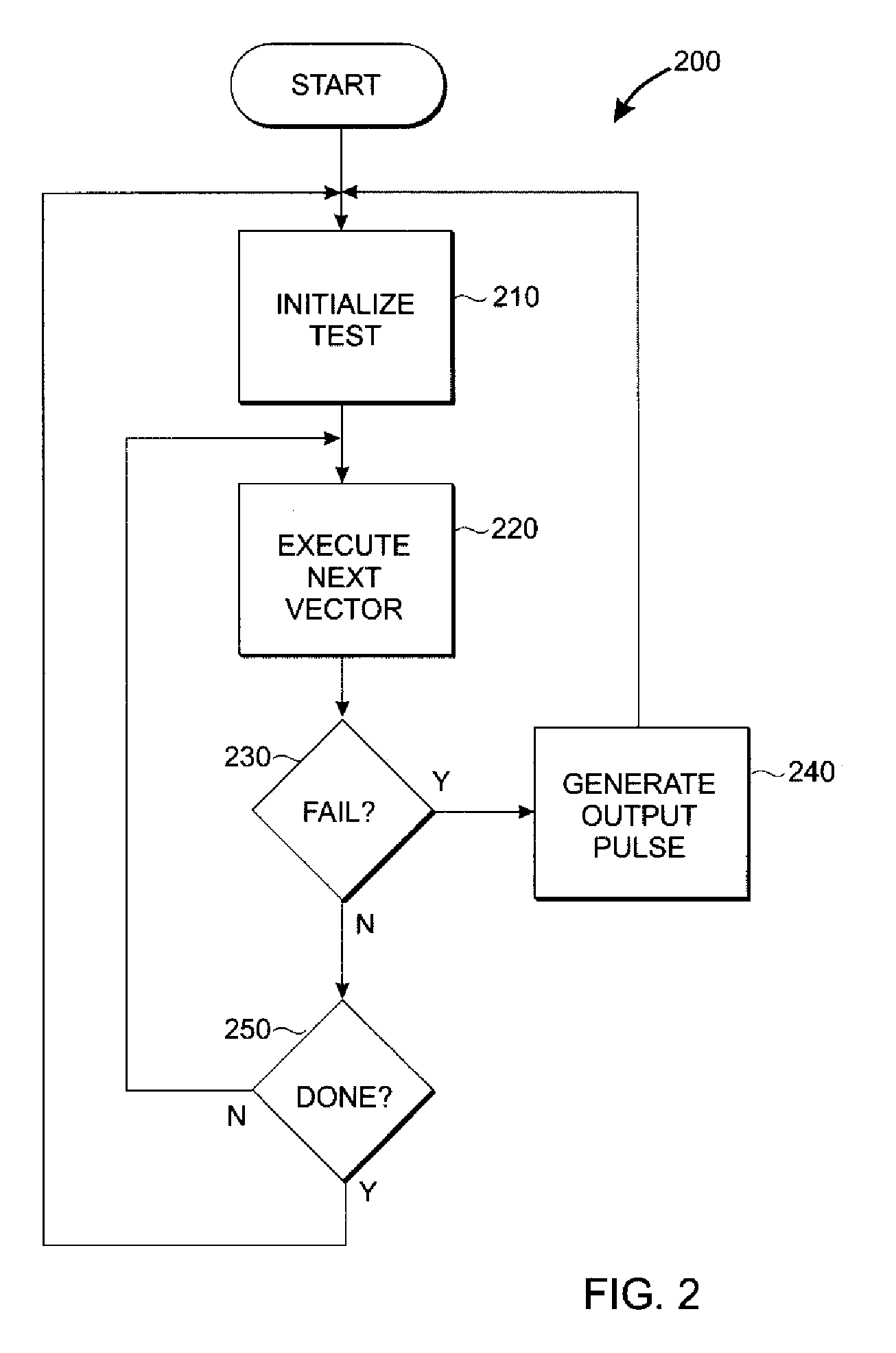Laser-induced critical parameter analysis of CMOS devices
a technology of critical parameter analysis and cmos, which is applied in the field of semiconductor device testing, can solve the problems of shortening the test cycle, increasing and disturbing the circuitry of the light energy dut, so as to improve the visual resolution of the test, shorten the test cycle, and increase the frequency with which the failure occurs
- Summary
- Abstract
- Description
- Claims
- Application Information
AI Technical Summary
Benefits of technology
Problems solved by technology
Method used
Image
Examples
Embodiment Construction
[0016] The present inventive technique provides Critical Parameter Analysis of complex semiconductor devices by combining the capabilities of automated test equipment (ATE) and optical beam microscopes (e.g., Laser Scanning Microscope or LSM). The ATE provides stimulus for the semiconductor device (a Device Under Test or DUT, e.g., a complex CMOS integrated circuit), while the Laser Scanning Microscope (or similar device) scans the semiconductor device, simultaneously producing a viewable image thereof and imparting photonic (light) energy to selected elements thereof as the scanning beam passes thereover. Whenever the ATE detects a device failure (i.e., when the DUT fails to generate an expected response to ATE stimulus) the ATE generates an output pulse. This output pulse is provided as an input to the LSM video display system in much the same manner described hereinabove with respect to Cole '305, Cole '183 and Koyama to produce a visible spot overlaying the viewable image that i...
PUM
 Login to View More
Login to View More Abstract
Description
Claims
Application Information
 Login to View More
Login to View More - R&D
- Intellectual Property
- Life Sciences
- Materials
- Tech Scout
- Unparalleled Data Quality
- Higher Quality Content
- 60% Fewer Hallucinations
Browse by: Latest US Patents, China's latest patents, Technical Efficacy Thesaurus, Application Domain, Technology Topic, Popular Technical Reports.
© 2025 PatSnap. All rights reserved.Legal|Privacy policy|Modern Slavery Act Transparency Statement|Sitemap|About US| Contact US: help@patsnap.com



